

www.EducationDx.com
This is a FREE information site!
Part of EdDx Educational Series
Part of EdDx Educational Series

1-Cooling
2-Cleaning
3-Compressor
2-Cleaning
3-Compressor
Refrigerator Parts--Compressor
Servicing, repairing, and troubleshooting refrigeration systems should be done only by those with the necessary knowledge, training, certification and equipment.
Refrigerator Parts--Compressor System Testing
WARNING:
This Section "Refrigerator Parts-Compressor System Testing" is for Technicians
It is not a complete service manual. Read your repair manuals, service and parts updates/bulletins, and specific manufacturer's instructions. Take all precautions when testing or working on any electrical equipment.
If you are not a trained professional technician, you are probably just reading for general knowledge so you can understand your repair person, not to implement what could be dangerous procedures for the untrained.
In any case, the reader/viewer assumes all responsibility for his/her actions. Know your limitations! It is recommended that you call a licensed professional refrigerator repair person for actual testing and repairs.
"This ain't plumbing, it can hurt you."--Quote from an electrician/instructor.
This Section "Refrigerator Parts-Compressor System Testing" is for Technicians
It is not a complete service manual. Read your repair manuals, service and parts updates/bulletins, and specific manufacturer's instructions. Take all precautions when testing or working on any electrical equipment.
If you are not a trained professional technician, you are probably just reading for general knowledge so you can understand your repair person, not to implement what could be dangerous procedures for the untrained.
In any case, the reader/viewer assumes all responsibility for his/her actions. Know your limitations! It is recommended that you call a licensed professional refrigerator repair person for actual testing and repairs.
"This ain't plumbing, it can hurt you."--Quote from an electrician/instructor.
This information is not intended to be a textbook or to replace the training required for professional service technicians. Also, it is not intended to replace other information available from the refrigeration manufacturers.
By continuing to read this page, I agree with the above information, and assume all risks and responsibility.
If you do not understand the above information or do not agree, please leave this page immediately.
If you do not understand the above information or do not agree, please leave this page immediately.


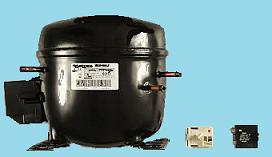
Some of the parts in a compressor kit
The compressor of a refrigerator
or freezer is contained in a sealed unit.
(there are other forms)
The compressor of a refrigerator
or freezer is contained in a sealed unit.
(there are other forms)

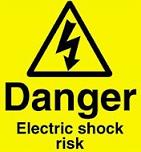
As you know, there are many different brands, models and "the age factor" that makes it almost impossible to provide materials to cover every refrigerator. You will find some generic information that may or may not apply to your specific refrigerator. Look for a repair manual for your specific refrigerator if you need more information/guidance and to check if your refrigerator does or doesn't have certain parts/features.
Note:
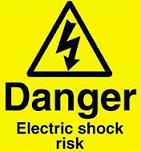
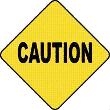



EducationDx
©2016, 2024
©2016, 2024
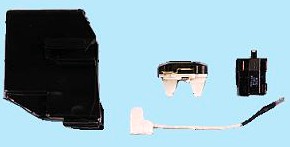
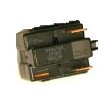
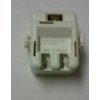


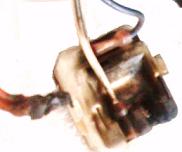


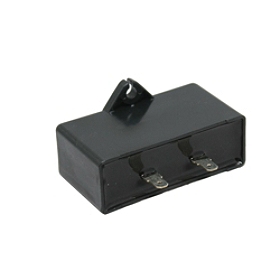

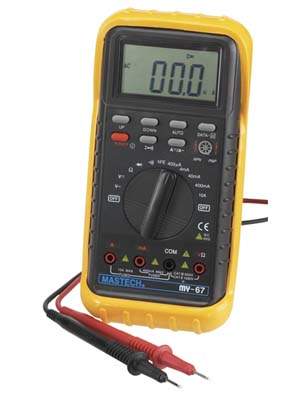




For more information about compressors, you can go to the Embraco, Tecumseh, Danfoss or other compressor manufacturer's websites.
Consult your repair manuals, service and parts updates/bulletins, and specific manufacturer's directions for the unit you are working on including the expected multimeter readings.
Note: A back-mounted condenser has no condenser fan.
Consult your repair manuals, service and parts updates/bulletins, and specific manufacturer's directions for the unit you are working on including the expected multimeter readings.
(If it isn't working normally, e.g., turning slowly, cutting out, or not turning at all)
protective cover bale strap terminals
Sometimes you don't need to test to know something is wrong.
(Right click, view- to enlarge)
Overload Protector and Relay Housing
(terminal box)(inside the red square) On some models, the housing is held in place with a bale strap or other fastener.
Overload Protector and Start Relay
(Location)(inside the white square behind the wires)
Caution: Unplug the refrigerator! These tests are conducted with the unit NOT being plugged in, i.e., NO ELECTRICITY!
Unplugged and I can still get shocked?

Caution: Before starting any work or testing on a refrigerator or freezer, make sure it is unplugged. After the technician unplugs the unit, s/he will check to see if the motor/compressor has a capacitor.
Capacitors store electricity
, even when the power to the unit is off. Before you test or work on a capacitor-type refrigerator/freezer, you must discharge the capacitor, or you could receive a severe shock.
(right click to enlarge)

Compressor Assy Diagram

Start

"Never service, repair, or troubleshoot unless
you are qualified to perform these functions.
Improper servicing can lead to serious
injury or death from fire, electrical shock, or
explosion." ~from the Tecumseh Website
you are qualified to perform these functions.
Improper servicing can lead to serious
injury or death from fire, electrical shock, or
explosion." ~from the Tecumseh Website
Start by reading the two safety quotes below from compressor manufacturers. Then examine the two diagrams to the right to become familiar with how a refrigerator and its components work. (Your model may differ.)

Technicians are trained to be knowledgeable and to practice safety!
Before you continue...you must discharge to test!
Use Eye Protection!
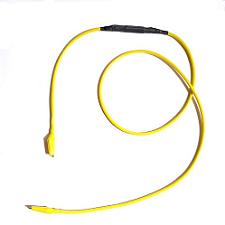
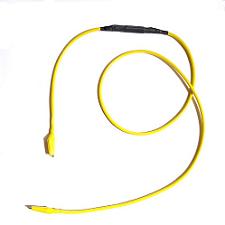

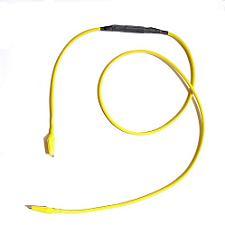

Add installation costs by a professional
...But this may not be the problem...read on...
Run Capacitor (inside the white square on this model)
Capacitors store electricity, even when the power to the unit is off (unplugged).
Yes, you can get severely shocked!
Capacitors store electricity, even when the power to the unit is off (unplugged).
Yes, you can get severely shocked!
Consult your repair manuals, service and parts updates/bulletins, and specific manufacturer's instructions for directions and safety precautions for the unit you are working on.
Note: This is a safer way (for you and the appliance parts) to discharge the capacitor. Don't use screwdrivers and other dangerous ways to accomplish this (dead-shorting)!
Caution: Unplug the refrigerator! These tests are conducted with the unit NOT being plugged in, i.e., NO ELECTRICITY!
Reminder>>>
Testing the Compressor Relay and the Overload Protector
The technician will make sure the capacitor is discharged as mentioned above. S/he doesn't want to get any back fed stored current while touching the bare wires, clips and terminals. By plugging the unit in to check the fan, the capacitor began to recharge (assuming it is working properly), but remember--it can store electricity for a very long time anyhow.

Check (for example) to see if your refrigerator has been recalled because of an electrical failure in the relay that starts the compressor can cause overheating, presenting a serious fire hazard. There may be others.
The repair technician should check to see if there are updates for this specific refrigerator. S/he should not install outdated replacement parts that have been recalled, replaced, or updated.
Overload Protector, Relay and Housing Kit
These kits come with complete installation instructions.
These kits come with complete installation instructions.
Note: As mentioned previously, there are many different types of overload protectors, start relays, and combinations. The technician should get the correct replacement part by using the model, series and other information off the refrigerator and compressor tags.
If you are replacing one of these, some suggest that you should replace all three.
(Definitely the overload protector and the start relay.)
(Definitely the overload protector and the start relay.)
Note: As mentioned above, your particular refrigerator may not have all of these components, they may not look like these parts, or may have combination parts that perform these or other functions at different locations. Technicians should refer to the wiring diagram and any references provided by the manufacturer.
Testing the Compressor
Note the burn marks above the compressor terminals indicated by the yellow arrow. These marks are probably from the overload protector burning out. The three red arrows point to the three compressor terminals.
Compressor Terminals
(accessed by removing the start relay
and overload cover/housing)
(accessed by removing the start relay
and overload cover/housing)
Consult your repair manuals, service and parts updates/bulletins, and specific manufacturer's directions for the unit you are working on including the expected multimeter readings.
Testing the Condenser Fan Motor
(unplugged)
If the condenser fan was running normally when the technician plugged it in to check, s/he may want to skip testing the condenser fan.
Earlier, the technician made a visual check of the condenser fan when s/he plugged the refrigerator in for a few seconds, then unplugged it. The condenser fan should be running anytime the compressor is running. Hopefully, s/he carefully cleaned the fan, shroud and other areas with a soft brush, cloth and vacuum cleaner.
+
+
Overload Protector
(yours may be different)
(yours may be different)
Start Relay
(yours may be different)
(yours may be different)
Older start relay coil and overload
?
Different Views of the Compressor and Relay/Overload Housing
Inside
(Right click, view- to enlarge)
Inside View
Compressor
Cover/Housing
(terminal box)
(terminal box)
For more information and/or to illustrate, you can right click on some photos/images to enlarge them for a better view. Move your mouse over a word or photo and it will change if it is a link (highlight, change color, a hand may appear).



3/3
3 Pages

What does the compressor do?

Examples of what a technician might do.

Compressor Info>>>
Example of a compressor system wiring diagram.
Your refrigerator may be different.
Your refrigerator may be different.

See


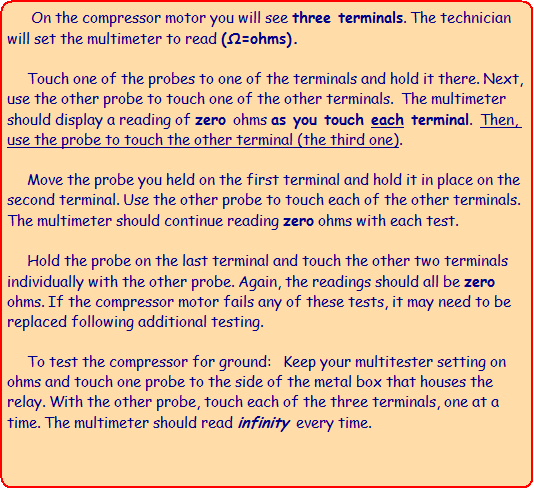
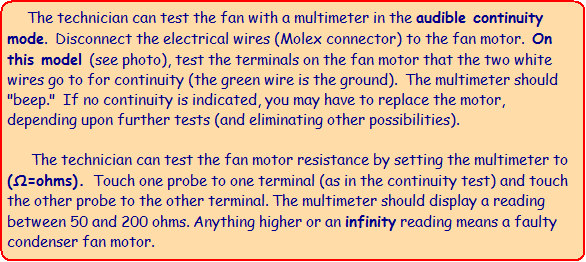
Run Capacitor
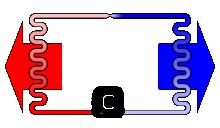


3/3
3 Pages

Note: Larger computer screens will show larger materials!
This is a FREE information site!
Part of EdDx Educational Series
Part of EdDx Educational Series
www.EducationDx.com
Refrigerator Parts--Compressor System Testing
WARNING:
This Section "Refrigerator Parts-Compressor System Testing" is for Technicians
It is not a complete service manual. Read your repair manuals, service and parts updates/bulletins, and specific manufacturer's instructions. Take all precautions when testing or working on any electrical equipment.
If you are not a trained professional technician, you are probably just reading for general knowledge so you can understand your repair person, not to implement what could be dangerous procedures for the untrained.
In any case, the reader/viewer assumes all responsibility for his/her actions. Know your limitations! It is recommended that you call a licensed professional refrigerator repair person for actual testing and repairs.
"This ain't plumbing, it can hurt you."--Quote from an electrician/instructor.
This Section "Refrigerator Parts-Compressor System Testing" is for Technicians
It is not a complete service manual. Read your repair manuals, service and parts updates/bulletins, and specific manufacturer's instructions. Take all precautions when testing or working on any electrical equipment.
If you are not a trained professional technician, you are probably just reading for general knowledge so you can understand your repair person, not to implement what could be dangerous procedures for the untrained.
In any case, the reader/viewer assumes all responsibility for his/her actions. Know your limitations! It is recommended that you call a licensed professional refrigerator repair person for actual testing and repairs.
"This ain't plumbing, it can hurt you."--Quote from an electrician/instructor.
By continuing to read this page, I agree with the above information, and assume all risks and responsibility.
If you do not understand the above information or do not agree, please leave this page immediately.
If you do not understand the above information or do not agree, please leave this page immediately.

What does the compressor do?
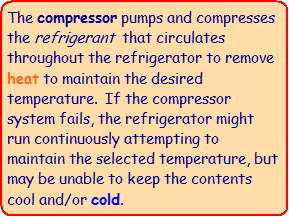

Add installation costs by a professional
...But this may not be the problem...read on...







"Do not touch the terminals of a charged
capacitor. This could be fatal."
~ from the Embraco Website
capacitor. This could be fatal."
~ from the Embraco Website
Start
Start by reading the two safety quotes below from compressor manufacturers. Then examine the two diagrams that follow to become familiar with how a refrigerator and its components work. (Your model may differ.)
"Do not touch the terminals of a charged
capacitor. This could be fatal."
~ from the Embraco Website
capacitor. This could be fatal."
~ from the Embraco Website
"Never service, repair, or troubleshoot unless
you are qualified to perform these functions.
Improper servicing can lead to serious
injury or death from fire, electrical shock, or
explosion." ~from the Tecumseh Website
you are qualified to perform these functions.
Improper servicing can lead to serious
injury or death from fire, electrical shock, or
explosion." ~from the Tecumseh Website


Example of a compressor system wiring diagram.
Your refrigerator may be different.
Your refrigerator may be different.
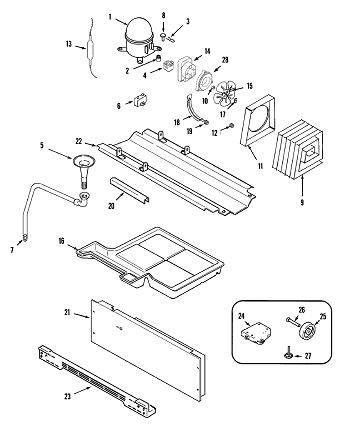
Compressor Assy Diagram
Caution: Unplug the refrigerator! These tests are conducted with the unit NOT being plugged in, i.e., NO ELECTRICITY!

Unplugged and I can still get shocked?
Caution: Before starting any work or testing on a refrigerator or freezer, make sure it is unplugged. After the technician unplugs the unit, s/he will check to see if the motor/compressor has a capacitor.
Capacitors store electricity
, even when the power to the unit is off. Before you test or work on a capacitor-type refrigerator/freezer, you must discharge the capacitor, or you could receive a severe shock.
(right click to enlarge)

Technicians are trained to be knowledgeable and to practice safety!
Before you continue...you must discharge to test!
Use Eye Protection!

See

Run Capacitor (inside the white square on this model)
Capacitors store electricity, even when the power to the unit is off (unplugged).
Yes, you can get severely shocked!
Capacitors store electricity, even when the power to the unit is off (unplugged).
Yes, you can get severely shocked!

Technicians sometimes make their own 20,000-ohm, 2-watt resistor, soldered, with 12AWG stranded wire and large booted (insulated) alligator clips or get a factory-made one available at an electrical supply store or just buy one!

Note: This is a safer way (for you and the appliance parts) to discharge the capacitor. Don't use screwdrivers and other dangerous ways to accomplish this (dead-shorting)!

Reminder
Caution: Unplug the refrigerator! These tests are conducted with the unit NOT being plugged in, i.e., NO ELECTRICITY!
Testing the Compressor Relay and the Overload Protector
The technician will make sure the capacitor is discharged as mentioned above. S/he doesn't want to get any back fed stored current while touching the bare wires, clips and terminals. By plugging the unit in to check the fan, the capacitor began to recharge (assuming it is working properly), but remember--it can store electricity for a very long time anyhow.

Overload Protector and Start Relay (Location)
(inside the white square behind the wires)
(inside the white square behind the wires)
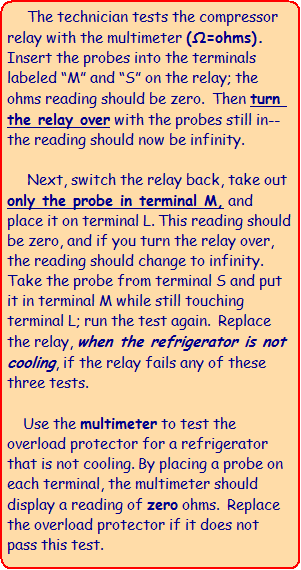
Note: Larger computer screens will show larger materials!

Inside
Inside View
(Right click, view- to enlarge)
Overload Protector and Relay Housing
(terminal box)(inside the red square) On some models, the housing is held in place with a bale strap or other fastener.
Consult your repair manuals, service and parts updates/bulletins, and specific manufacturer's directions for the unit you are working on including the expected multimeter readings.

Compressor

Cover/Housing
(terminal box)
(terminal box)

Compressor Terminals
(accessed by removing the start relay
and overload cover/housing)
(accessed by removing the start relay
and overload cover/housing)

Testing the Compressor
Note: Larger computer screens will show larger materials!
EducationDx
©2016, 2024
©2016, 2024

*Disclosure: Some links on this website are associate links and are used to help illustrate what an item looks like, and you can decide if you want to just look or purchase the item. "As an Amazon Associate, I earn from qualifying purchases." We receive a small commission (that helps support this website) if you actually purchase from this company, but the price to you remains the same.
You can hover over any link to see if it is an Amazon link, if this matters, or a link to a page on this website or to a reference page, e.g., Smithsonian Institution, bookmark on this website, etc.
You can hover over any link to see if it is an Amazon link, if this matters, or a link to a page on this website or to a reference page, e.g., Smithsonian Institution, bookmark on this website, etc.
Amazon Links
Amazon Link
Amazon Link
Amazon Link
Amazon Link
Amazon Link
Technicians sometimes make their own 20,000-ohm, 2-watt resistor, soldered, with 12AWG stranded wire and large booted (insulated) alligator clips or get a factory-made one available at an electrical supply store or just buy one!
Amazon Link
Sponsored Link
Sponsored Link
*Disclosure: Some links on this website are associate links and are used to help illustrate what an item looks like, and you can decide if you want to just look or purchase the item. "As an Amazon Associate, I earn from qualifying purchases." We receive a small commission (that helps support this website) if you actually purchase from this company, but the price to you remains the same.
You can hover over any link to see if it is an Amazon link, if this matters, or a link to a page on this website or to a reference page, e.g., Smithsonian Institution, bookmark on this website, etc.
You can hover over any link to see if it is an Amazon link, if this matters, or a link to a page on this website or to a reference page, e.g., Smithsonian Institution, bookmark on this website, etc.